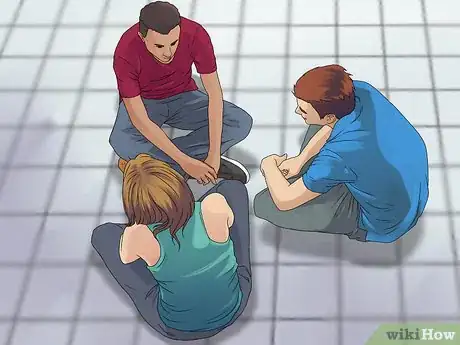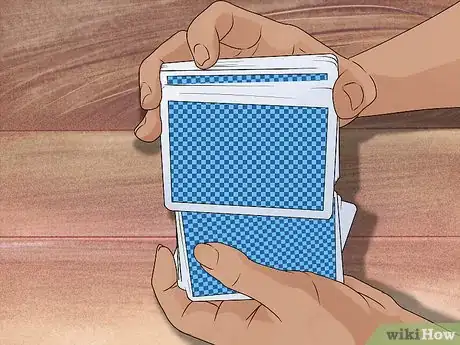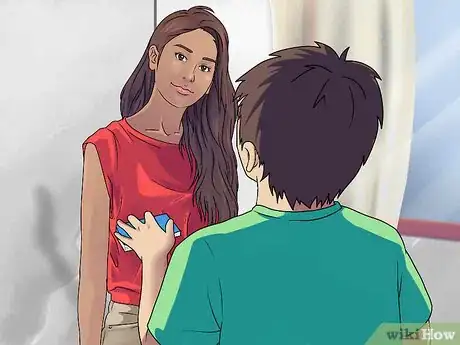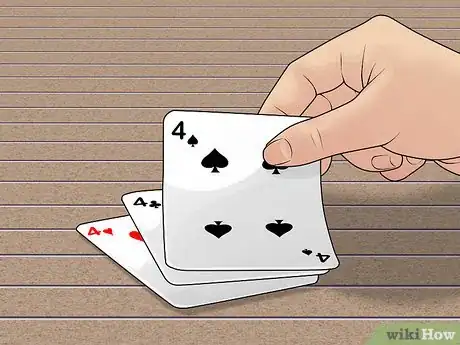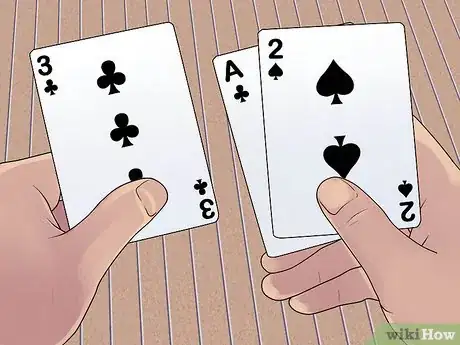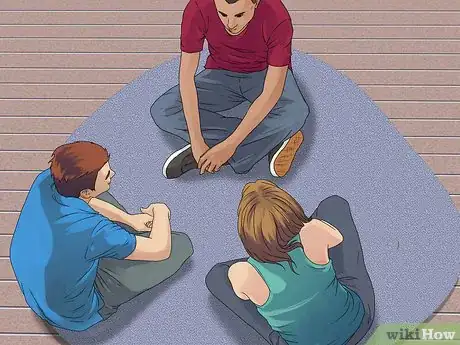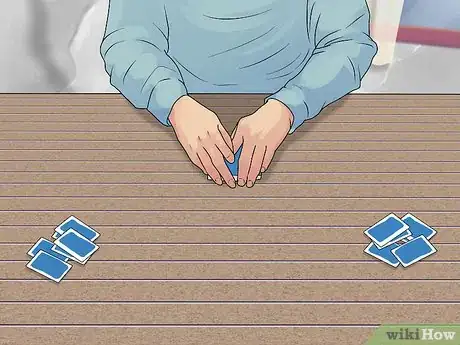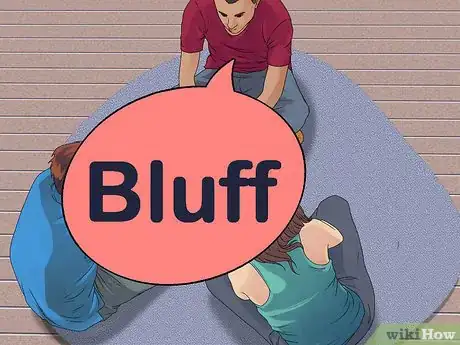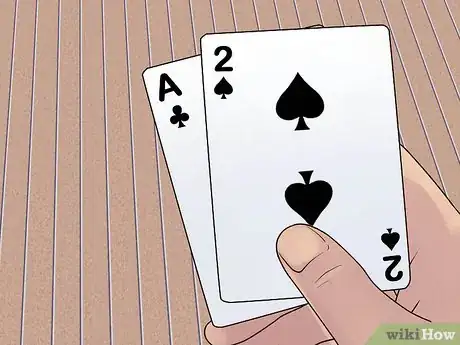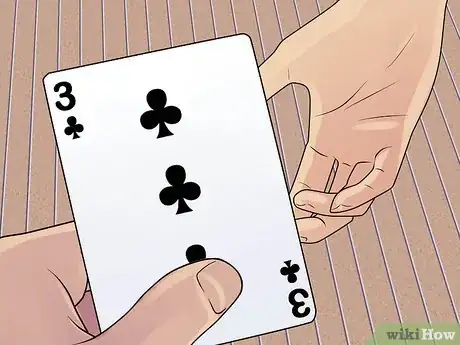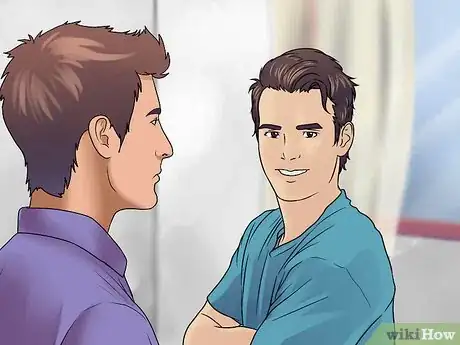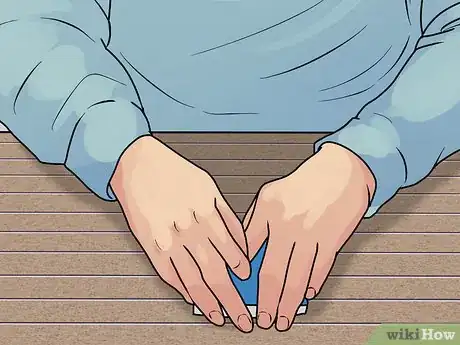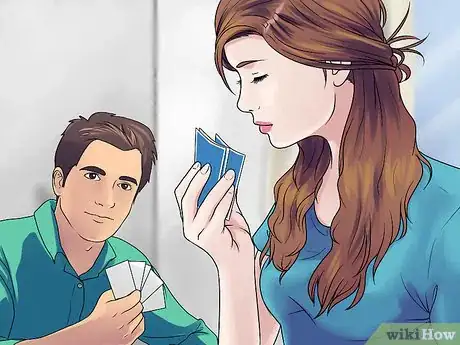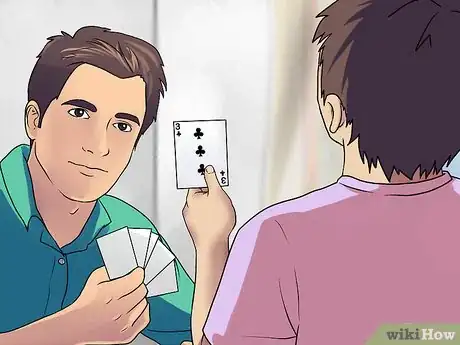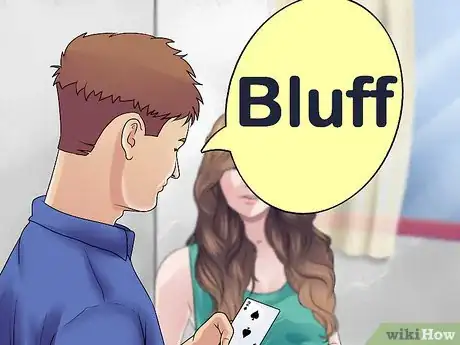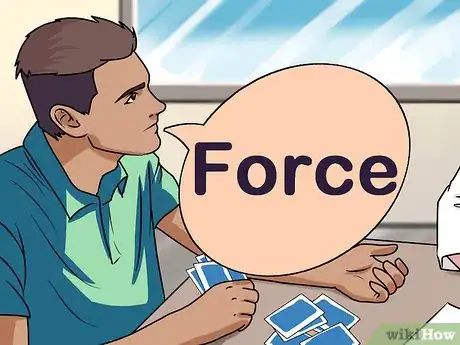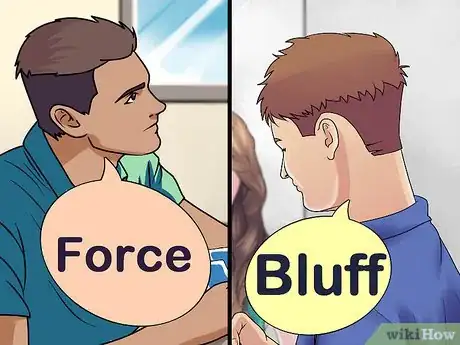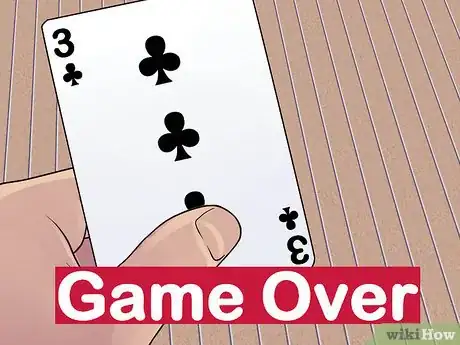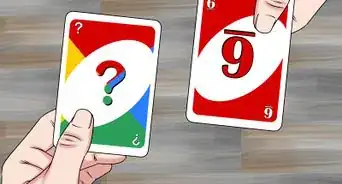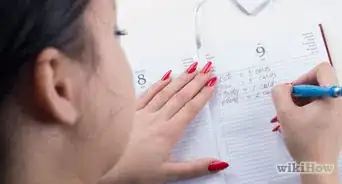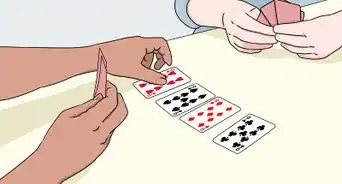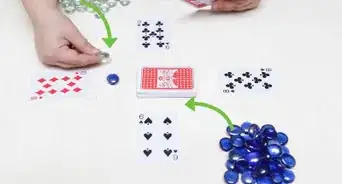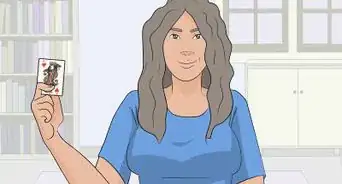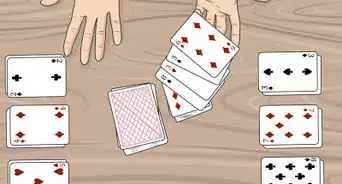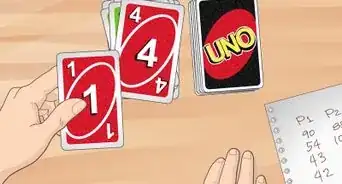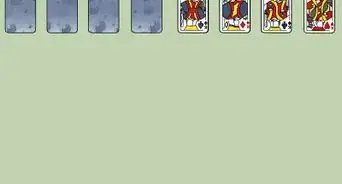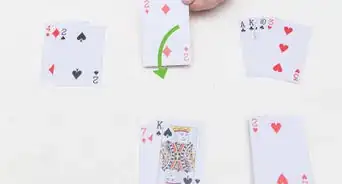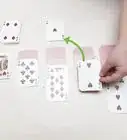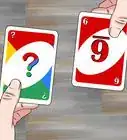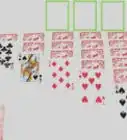wikiHow is a “wiki,” similar to Wikipedia, which means that many of our articles are co-written by multiple authors. To create this article, 15 people, some anonymous, worked to edit and improve it over time.
This article has been viewed 284,172 times.
Learn more...
Bluff is a card game in which players must get rid of all of their cards in order to win. It goes by many names, like I Doubt It, BS, and Cheat, and has just as many variations. If you've always wanted to know how to play Bluff, or haven't even heard of the game but are now curious what it is, this article will teach you how to play Bluff. And, you might pick up some tips and tricks along the way!
Steps
Playing Standard Bluff
-
1Have players sit in a circle. This version can be played with three to ten people, and requires one standard 52 card deck. Remove the jokers from the deck. Place the ace of spades face up in the middle of the circle so that all players can reach it.
-
2Shuffle and evenly distribute the cards. It's okay if it's not exact, but the players' hands shouldn't differ by more than one card. Players may look at their hands, but must keep them private. The cards should be kept visible at all times.Advertisement
-
3Pick one player to go first. He/she must find any 2s he/she has and place them on top of the ace face down and say, "one 2" or "three 2s" etc. However, if s/he doesn't have any 2s, s/he must pick one or multiple cards and bluff. Play goes clockwise.
- You can bluff with as many as four cards, but the fewer cards you play when bluffing, the more believable the bluff will be, as it would be unlikely to have all four 2s in your hand. Bluffing with a number of cards higher than one is riskier, but the payoff is greater because you get rid of more cards.
-
4Continue play clockwise. The next player must put down all his/her 3s, the next player 4s, and so on. After Kings, the play goes back to Aces. As with the first turn, if at any time a player doesn't have any cards of the next rank, he/she must bluff, and risk having to pick up the whole pile. There is no pass option.
-
5Call "Bluff" when one desires. If at any point in the game a player thinks another is bluffing, he/she can say "Bluff!" right after the cards are set down. If the challenged cards were not what the player said they were, the player who bluffed must take all the cards from the pile. However, if the player didn't bluff, the challenger must take all of the cards from the pile.[Image:Play Bluff Step 5.jpg|center]]
- After the challenge is settled, the next player takes his/her turn with the next rank of cards.
-
6Play until a player runs out of cards. This ends the game, and that player has won.[1]
Trying the I Doubt It Version
-
1Have players sit in a circle. This version can be played with three or more people, but works best with fewer than six. It requires one standard 52 card deck. Remove the jokers from the deck.
-
2Shuffle and evenly distribute the cards. It's okay if it's not exact, but the players' hands shouldn't differ by more than one card. Players may look at their hands, but must keep them private. The cards should be kept visible at all times.
-
3Pick a player to go first. This player must place a single card in the middle of the circle, face down. He/she should announce the rank of the card, whether it's a queen, or a 2, etc. If he/she chooses, he/she can play a card that doesn't match the rank announced.
-
4Continue the round. Play goes clockwise. The next player has two choices. He/she can pass the turn without playing a card, or play a single card facedown on the pile. By playing a card, he/she is claiming that it is of the same rank as the first card, but it may or may not be.
- Passing is the safer option if a player doesn't have any cards that match the round's rank, but bluffing will get rid of his/her cards faster.
- You can bluff even if you have a card of the round's rank. This could be a risky but effective strategy if, for instance, you have multiple cards of the round's rank. The other players will have no reason to suspect you don't, especially early in the round, and they will be less likely to call bluff. You can then on later turns use the actual cards that match the rank, which players will be more likely to incorrectly call bluff on.
-
5Call "Bluff" when one desires. If at any point in the game a player thinks another is bluffing, he/she can say "Bluff!" right after the card is set down. The challenged player now turns over the challenged card. If it is the wrong card, the player who bluffed must take all the cards from the pile. However, if he/she didn't bluff, the challenger must take all of the cards from the pile.
-
6Finish the round. The round continues until either all players pass, thereby stating that there are no more cards of that rank left, or someone's bluff is called.
- If everyone passes, the pile is discarded without revealing the cards, and the player who passed last starts a new round.
- If a player is challenged, the player who wins the challenge starts the next round.
-
7Finish the game. The game ends when it is a player's turn, that player has one card left, and the card either matches the current rank of the round, or they are starting a new round.[2]
Playing with Two People
-
1Have players face to face. This version was made to be played with two people. It requires one standard 52 card deck. Remove the jokers from the deck.
-
2Shuffle and evenly distribute the cards. Both players should have 25 cards. Players may look at their hands, but must keep them private. The cards should be kept visible at all times.
-
3Pick a player to go first. This player must place a single card in the middle of the circle, face down. He/she should announce the rank of the card, whether it's a queen, or a 2, etc. If he/she chooses, he/she can play a card that doesn't match the rank announced.
-
4Continue the round. Play goes clockwise. The next player has two choices. He/she can pass the turn without playing a card, or play a single card facedown on the pile. By playing a card, he/she is claiming that it is of the same rank as the first card, but it may or may not be.
- Passing is the safer option if a player doesn't have any cards that match the round's rank, but bluffing will get rid of his/her cards faster.
- Even if you have a card that matches the round's rank, you can bluff, and play a different card. This can be an effective strategy because the other player will have no reason to believe you don't have a card that matches the rank if s/he doesn't have all the cards of that rank in their hand. Then you can go on to play more of your cards by later using cards of the actual rank.
-
5Call "Bluff" when one desires. If at any point in the game a player thinks another is bluffing, he/she can say "Bluff!" right after the card is set down. The challenged player now turns over the challenged card. If it is the wrong card, the player who bluffed must take all the cards from the pile. However, if he/she didn't bluff, the challenger must take all of the cards from the pile
-
6Call "Force" when one desires. Any time the opposing player has just played a card, a player may say "Force!" This challenges the player to produce another card from his/her hand that matches the rank of the round. If the player is unable to, he/she must pick up the pile. If the player does produce a card of the correct rank from his/her hand, the challenger must pick up the pile.
- A player on their last card cannot be "forced."
-
7Finish the round. The round continues until all players pass, or someone is challenged, either by someone calling "Bluff!" or someone calling "Force!"
- If both players pass, the pile is discarded without revealing the cards, and the player who passed last starts a new round.
- If a player is challenged, the player who wins the challenge starts the next round.
-
8Finish the game. The game ends when it is a player's turn, he/she has one card left, and either the card matching the current rank of the round, or he/she is starting a new round. That player has won.[3]
Our Most Loved Articles & Quizzes
Community Q&A
-
QuestionOnce a player has won, can they find out if an opponent has bluffed?
 Community AnswerThey can if the opponent in question is willing to show their card(s).
Community AnswerThey can if the opponent in question is willing to show their card(s). -
QuestionIf a player bluffs and is caught, who plays the next hand?
 ArnavCommunity AnswerThe person who caught someone bluffing plays next, and can throw any number the player desires.
ArnavCommunity AnswerThe person who caught someone bluffing plays next, and can throw any number the player desires.
Warnings
- Don't be a sore loser or a sore winner.⧼thumbs_response⧽
- Even though it's fun, don't look at another player's cards.⧼thumbs_response⧽
References
About This Article
Bluff is a fun card game where players try to lie without getting caught so they can get rid of all their cards first. To play, first deal all of the cards in a standard deck out to the players one at a time. The player to the dealer’s left goes first. They must play one or more 2’s from their hand face-down in the middle of the playing area and announce how many 2’s they’re playing. If they don’t have any 2’s, they still must play one or more cards face-down and bluff. Once they’ve played their cards, the player to their left must now play one or more 3’s. The next player must play one or more 4’s, and so on. Once someone plays aces, the next player starts back at 2’s again. Any player can accuse another player of bluffing right after they play their cards. At that point, the player whose turn it is reveals the cards they just played. If they were bluffing, they pick up all of the cards in the middle of the playing area. If they weren’t bluffing, the player who accused them picks up all of the cards. The game continues until one player runs out of cards first and wins! To find out how to play other versions of Bluff, read on!
